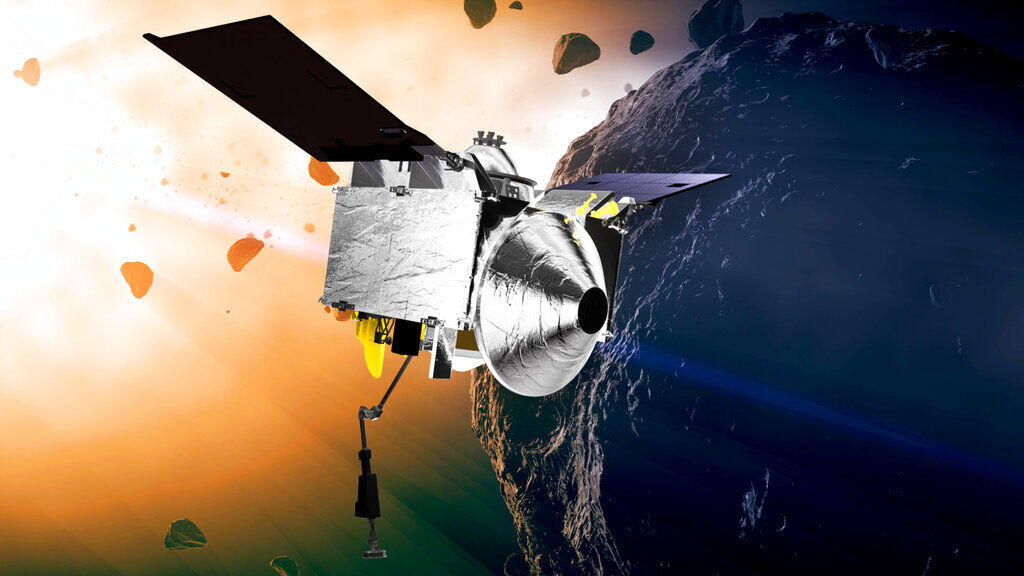


Farnocchia says this force is about the same as that exerted on a plate by the weight of three grapes. And they also had to estimate the impact of the Yarkovsky effect, a tiny amount of thrust caused when the Sun-facing side of an asteroid is warmed and then, after it has rotated, emits thermal photons in a different direction. But to calculate its future trajectory, they had to consider the drag on Bennu from solar wind and the gravitational effect of 343 nearby asteroids and other bodies. With OSIRIS-REx and its range-finding instruments so close to Bennu, the researchers could pin down its orbit to a few meters. To get a better idea of how the 2135 encounter would play out, researchers led by Davide Farnocchia of NASA’s Jet Propulsion Laboratory analyzed those data and the new information from OSIRIS-REx. Researchers have identified 26 so-called “gravitational keyholes” around Earth, areas of space where, if the asteroid passes through them, Earth’s gravity could deflect Bennu onto a collision course with our planet. That’s because Earth’s gravity could give it a tug during the flyby, altering the asteroid’s trajectory. Although the asteroid is only about one-twentieth the size of the one that killed the dinosaurs, a direct hit would still be devastating on a continental scale.įrom earlier observations by telescopes on Earth, researchers know Bennu is due to make its next closest flyby of Earth-inside the Moon’s orbit-in 2135. As a bonus, NASA’s planetary defenders could also gather a wealth of data about the potential threat that Bennu poses to Earth. The probe is scheduled to drop its treasure by parachute in the Utah desert in September 2023.īennu was the chosen target partly because its orbit around the Sun is like Earth’s, so the two bodies occasionally approach each other, making it easier for a spacecraft to reach the asteroid and get home again. Bennu is thought to be a fragment of a larger planetesimal-a building block of planets-that formed beyond Jupiter in the early days of the Solar System, so it could hold important clues about how planets form. Then, the spacecraft swooped down to grab 1 kilogram of dust and pebbles before heading home. But Bennu and another asteroid known as (29075) 1950 DA remain the two most hazardous asteroids to Earth, so NASA will keep monitoring them closely.Īs part of its mission to return asteroid samples to Earth, OSIRIS-REx reached Bennu in 2018 and trailed it until October 2020, studying the asteroid’s composition, structure, mass, and temperature. “I don’t think we need to do anything about Bennu,” planetary scientist Lindley Johnson of NASA’s Planetary Defense Coordination Office said at a press briefing today. The researchers behind the NASA-sponsored study emphasize that the risk of an impact remains very small-one in 2700, or 0.037%-and that, armed with the wealth of data from OSIRIS-REx’s 2 years orbiting the asteroid, they now know much more about it and the risk it poses. That’s the day, according to a study released today, that a half-kilometer-wide asteroid called Bennu-recently visited by NASA’s OSIRIS-REx spacecraft-has the greatest chance of colliding with Earth in the next 300 years.


 0 kommentar(er)
0 kommentar(er)
